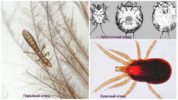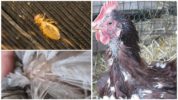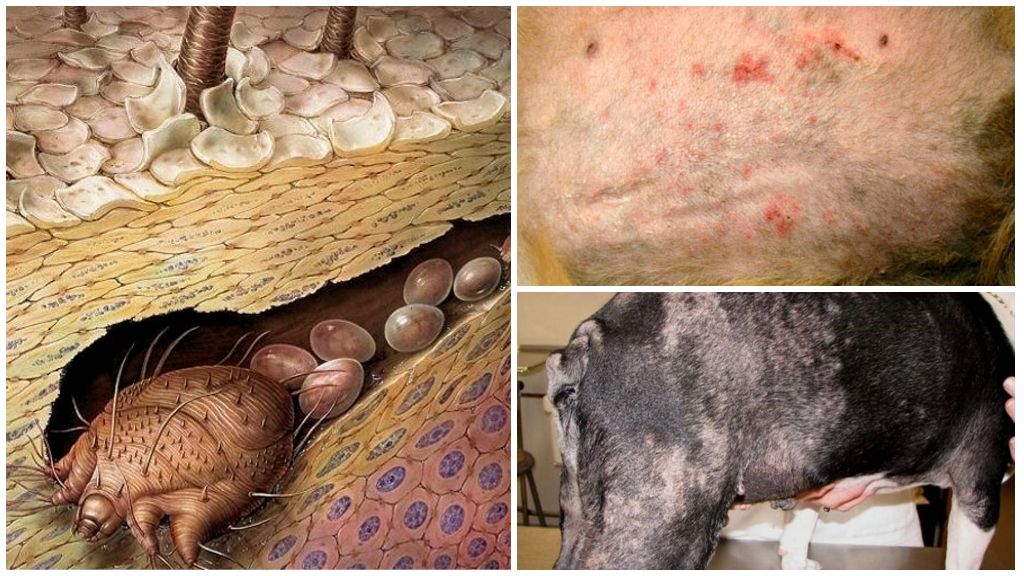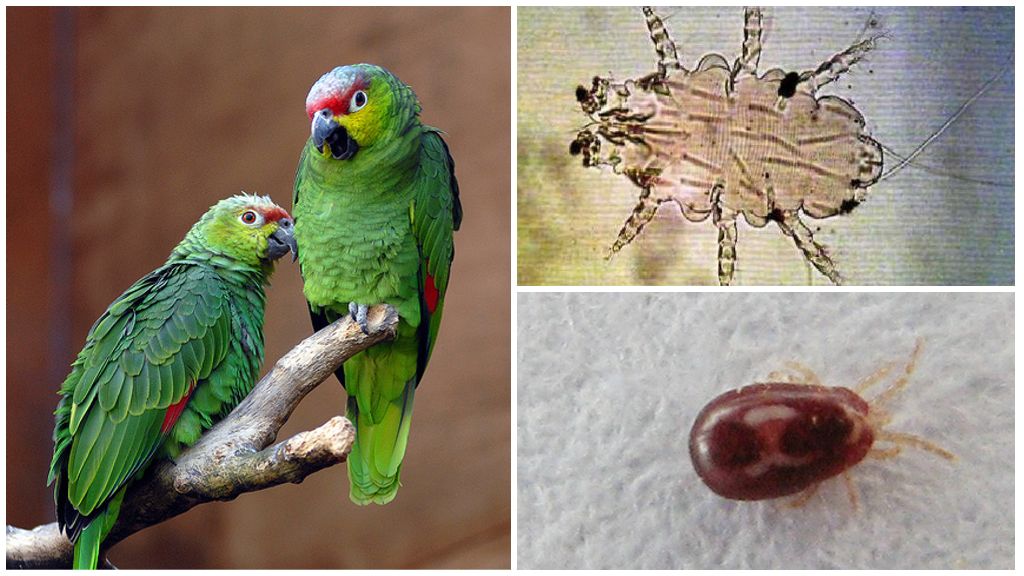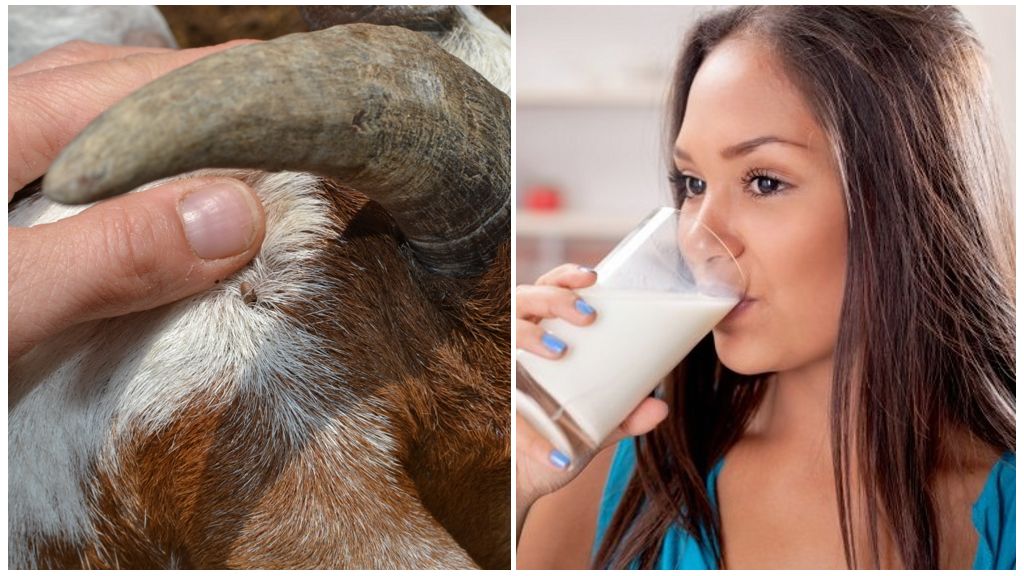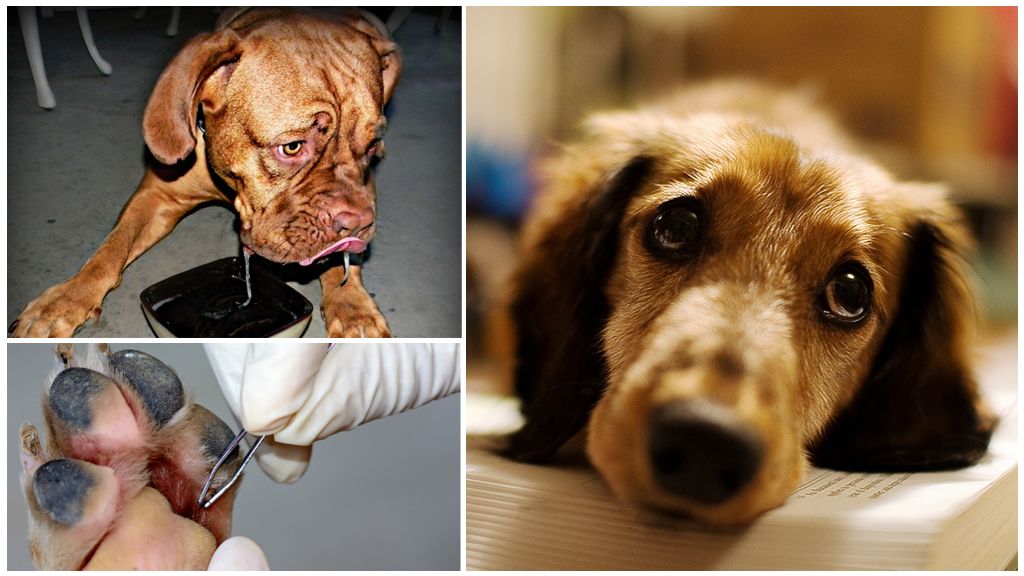- Chickens parasitic mites
- Chick feather tick
- Chick feather tick
- Chicken house disinfectants
- Means for treating chickens from ticks
Among pet parasites, the most dangerous are ticks. They are widespread, begin to appear with the onset of warm days (May, June). Strongly absorbed into the body of an animal, a chicken tick releases saliva, along with it an infection can enter the body. This pest also causes many problems for poultry farmers and farmers. In laying hens, the condition of feathers noticeably worsens, productivity decreases. Ticks in broiler chickens negatively affect the development of young animals, they slowly gain weight. Infection of birds can occur not only during the period of activity, but also at any time of the year.
Chickens parasitic mites
Bird tick - a parasitic arthropod that feeds on blood. Pests live under feathery bird cover. High humidity and heat are favorable factors for reproduction and life. Most often they can be found in places where the owners do not follow the required rules for keeping birds. There are several varieties of chicken mites that differ in size, appearance, and chosen habitat. The most dangerous of these are arthropods:
- Feathers. Ticks settle on the pen or in its holes. Most often they can be found in the neck or under the wings - the warmest places. If the infection is massive, ticks can be found in the area of the eyes, nostrils. Birds lose feathers, mass, poorly carried. Treatment of feather ticks in chickens with their massive defeat does not bring the desired effect. In this case, you will have to get rid of the entire livestock.
- Scabies. Ticks are small, their sizes barely reach 0.5 mm. The appearance of this type of tick causes a disease in hens called knemidocoptosis. Parasites settle under the scales of llamas, sometimes they can be found near the beak. At first, they do not give themselves away and quietly breed. After 2-3 months, tubercles appear on the legs, deformation of the phalanges occurs. You need to start treatment immediately. Otherwise, necrotic changes occur.
- Reds. Mobile small ectoparasites. The length of the body is about 0.75 mm. Tick color is yellowish. As soon as he drinks blood, the color changes and turns red and later purple with a brown tint. The tick increases in size, swelling up to one or more cm. After the female chicken red tick gets drunk blood, it is able to lay 2 to 20 eggs.
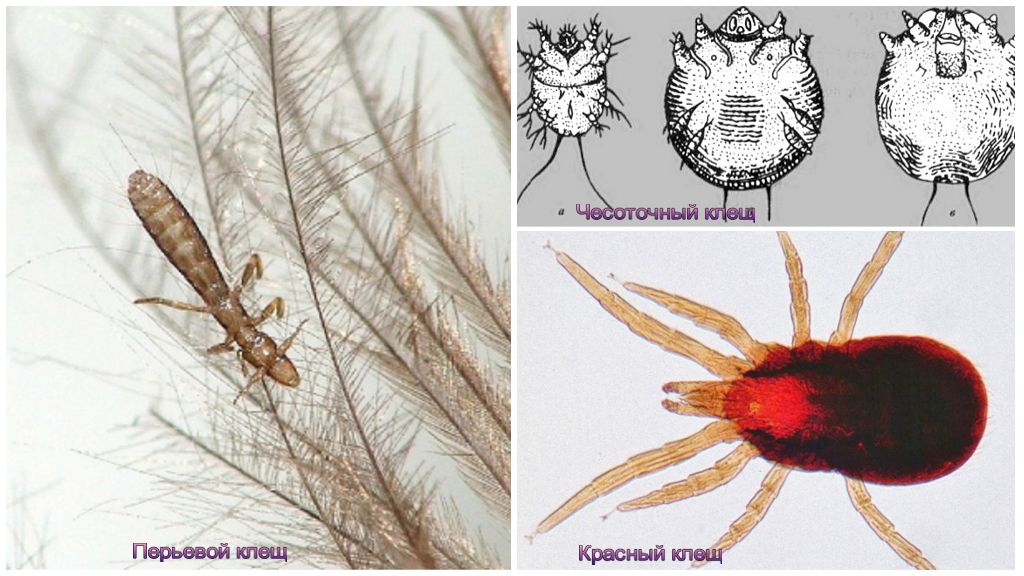
On a note!
Ticks are transmitted to birds during contact, through care items, and even when using folk remedies, since they live in fallen scales for some time. Dirty chicken coops are their favorite places in the litter, they can live up to two weeks, in the winter - several months. Most often, ticks are found in birds with weak immunity.
Features of feather ticks
On the feathers of birds, several species of ticks can parasitize at the same time. They settle directly on the feathers or in the back - the cavity of the trunks. The tick moth eats arrows of spores, feather grease, bacteria.They do not have a strong negative effect on the birds, and even their large number of special discomforts do not deliver to the birds. Weakness and a decrease in egg production is observed if a concomitant disease is present.
Important!
Serious danger is caused by an external tick, contributing to the loss of feathers. With strong reproduction, the bird may die.
Signs of chicken infection
Since the activity of ticks is observed mainly at night, it is difficult to notice them immediately. They leave microscopic wounds on the body of the chicken. When bitten, the parasite injects poison, resulting in itching in the bird. Symptoms of a feather tick are as follows:
- hens are noticeably nervous;
- egg production decreased;
- birds reluctantly enter the chicken coop, do not use nesting places;
- hens are panting, coughing.
Chicken flares can settle in the trachea and larynx of a bird. With a large number of parasites, arthropods can be found in the nasal cavity. If the birds constantly shake their heads, this indicates the presence of ear mites in chickens. Trying to get rid of parasites, they try to get them a bite place to scratch it. But the tick in the hens on the legs is not often observed. This is due to the fact that for arthropods, the skin in these places is quite tough.
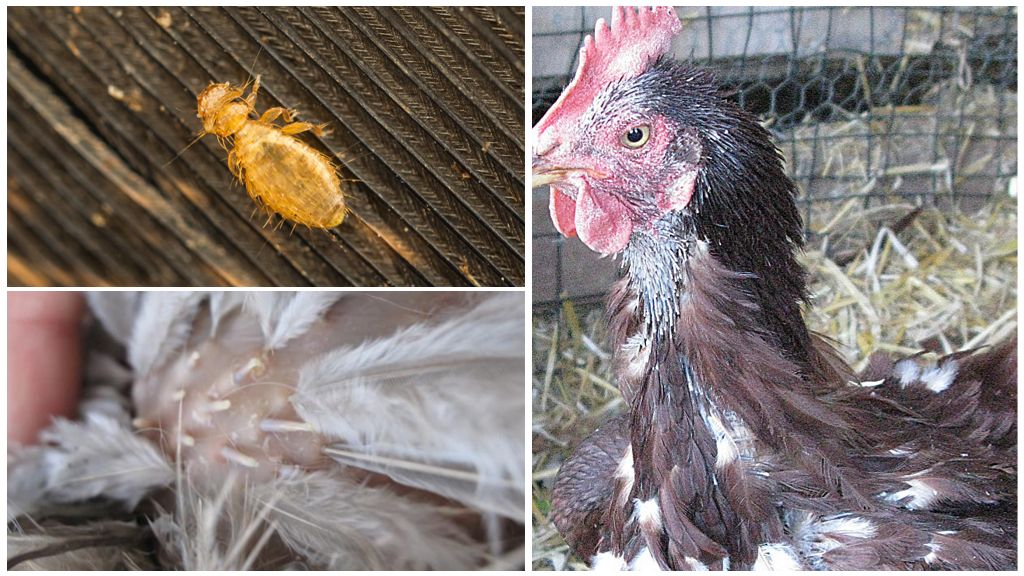
Important!
If ticks are found on birds, it will become noticeable that chickens clean their plumage more often, pinch in the anus and under the wings. A careful examination of these areas shows tiny specks of red or black. In the chicken coop, streaks of blood or black grains will be noticeable, they can be felt if you hold your hand on the surface.
How the chicken tick looks
The body of chicken mites is oval, flattened, elongated, consisting of separate scutes. This feature makes it possible for parasites to increase in size several times after they have drunk blood. An adult tick has 4 pairs of limbs; they have alterations with transparent suction cups and claws. The sensory organs are the first pair of limbs.
If you look closely at the photo of the chicken tick, you will notice that the male has a more elongated body than the female. In a hungry parasite, its length is about 0.6-1 mm, the color is yellow. After saturation, it increases, the body acquires a red, almost brown color. For the development of chicken mites, humidity should be in the range of 70-100%, temperature - 20-25 ° C. The full cycle of development of a chicken tick: larva → protonymph → deutonymph → imago is from 6 to 12 days.
The female is able to lay from 3 to 24 small sizes of eggs with a thin skin 17-24 hours after saturation with blood. The amount depends on how much blood the parasite drinks. Larvae appear after 2-3 days. They are inactive, have 3 pairs of limbs. They develop thanks to the embryonic yolk. The protonymph has 4 pairs of limbs. After two days, molting occurs, and the tick passes into the stage of deutrophy. After the next molt, the tick becomes an adult. If the conditions are favorable, after 8 days the female is able to lay eggs.

Interesting!
Ticks have natural enemies. They feed on birds, including chickens and ticks. For them, this is a real treat.
Danger to people
A chicken mite in a person on the body can also be detected. If they live in birds for years, it does not live on the human body, since the skin is hard, the temperature is low for arthropods, and they simply will not be able to eat. Therefore, chicken mites die or seek for a host - the appropriate bird. Chicken mites are dangerous for humans because they cause significant harm to their activities. Attacking chickens, they reduce their productivity, can cause the death of birds. Young birds and laying hens are especially susceptible to tick bites. Unlike Russia, European countries have excellent statistics on the damage caused by chicken mites.The loss is estimated at approximately 130 million euros per year.
After bites of the scabies mite, leg diseases are observed in laying hens. The disease is called knemidocoptosis or "calcareous legs." Getting under the scales that cover the paws of birds, a chicken tick passes under them the entire life cycle. The chickens have a severe itch, they itch. As a result, scales are peeled off on the paws, a white coating similar to lime appears on them. After the hens choose the habitat of the paws, on them in the near future growths in the form of tubercles will appear. At the initial stage of the disease, getting rid of a chicken tick is not difficult. Sick chickens are isolated, as infection occurs by contact. A soap solution is prepared for them (50 grams of laundry soap is diluted in 1 liter of warm water), it is poured into a container and the hens are dipped in the liquid for one minute. Liquid level - up to feather cover. After this, the legs are smeared with birch tar or creolin.
On a note!
Bird mites may appear in the apartment. These are most often pigeon parasites. In the event of a collision with them, there is a chance of being attacked. For people, they are dangerous at any stage. But the great danger comes from larvae that can live on the human body for up to 7 days and feed on blood.
Chicken mite control methods
If ticks are found on hens, urgent measures must be taken to get rid of them. Fighting ticks in chickens must be comprehensive.
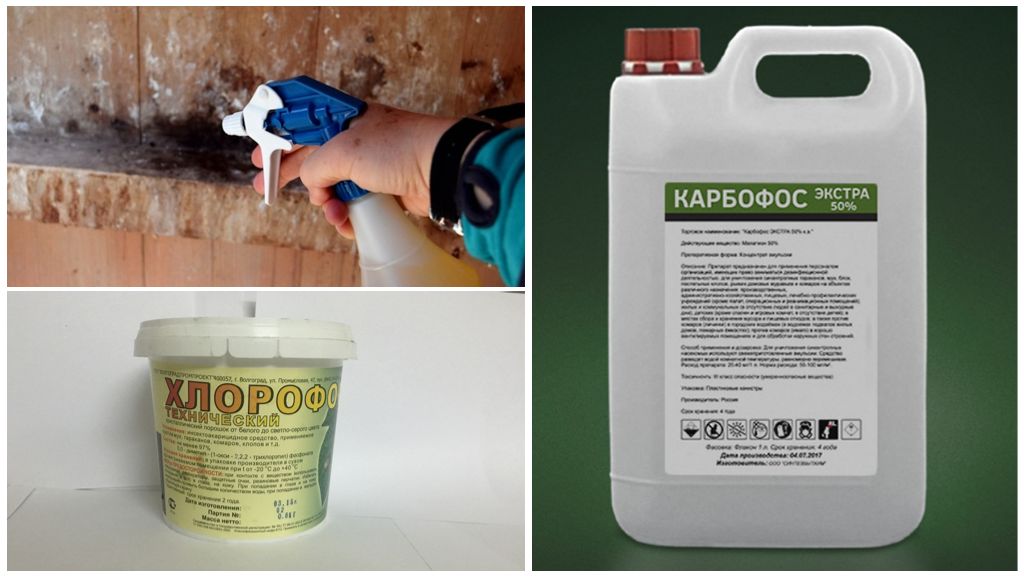
On a note!
It is recommended that you carefully examine each chicken. Particular attention should be paid to places under the wings, on the neck. It is necessary to treat the places of bites using disinfectants, and then grease them with oil.
Be sure to treat the chicken coop from ticks. Chickens are temporarily relocated. After that, they start cleaning the chicken coop from dirt. It is advisable to do heat treatment in the premises. You can floor, pour boiling water over the walls. But the best way is to use a blowtorch or fire. They completely burn the room, it is better to throw out the old perches and exchange them for new poles and crossbars. Especially if they are made of wood, since even after processing, chicken mites can remain in the cracks. It is advisable to periodically treat the walls with diesel fuel and grease with lime.
The industry produces many products that effectively help get rid of fleas and ticks. They are commercially available. To process all surfaces in the chicken coop, it is recommended to purchase the following chemicals:
- 1% malathion. The price is 18-60 rubles., Depending on the packaging.
- 2% Chlorophos. Sold in powder form. The cost of 1 bucket (800 g) is about 900 rubles.
- 0.5% Tsiodrin.
- 0.5% Neocidol.
The actual price of the drugs Tsiodrin and Niacidol can be found over the phone at a veterinary pharmacy or by leaving a request on a specialized website.
To fight the chicken tick, veterinarians advise using special means that spray birds:
- Delcid. A solution is prepared from it. The package contains 5 ampoules. The average price ranges from 128 to 151 rubles.
- Butox 50. A concentrated preparation used to prepare a solution. It goes on sale in a TV package containing 5 ampoules of 1 ml each. The cost is about 85 rubles.
- Dust. They process feathers of birds. Price from 33 rub. (100 g) to 748 rubles. (1 kg)
- Milben. The finished product. Sold in the form of sprays. The cost of 1 bottle (100 ml) 450-560 rubles.
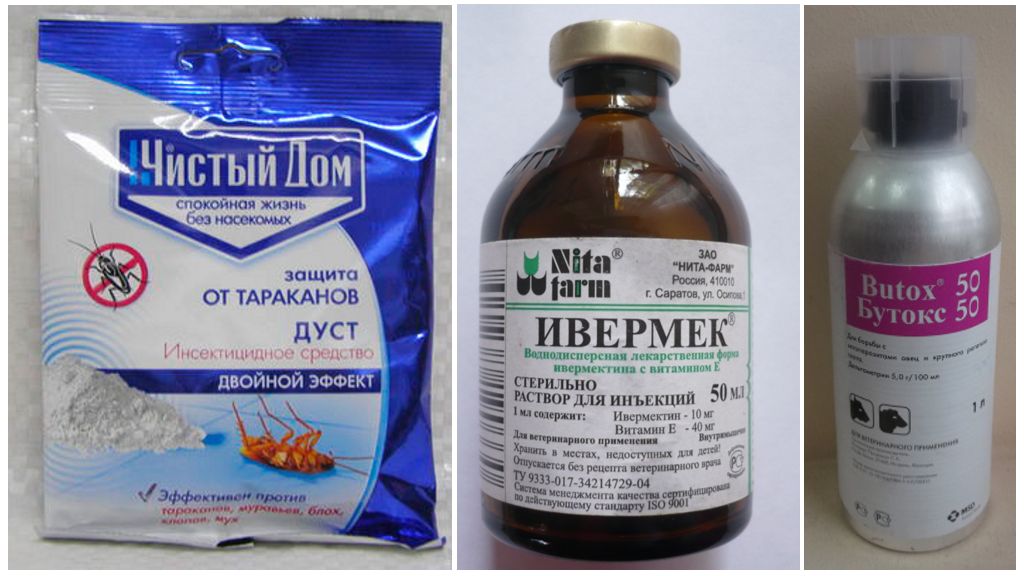
Important!
Since any of the proposed remedies is poisonous, the instructions attached to each drug should be strictly observed.
In veterinary clinics offer vaccination of birds. For this, each of them needs to be given an injection (Ivermek).
Such control measures are suitable if the hosts have not so many birds. With a large headboard, it is unrealistic to process each chicken, therefore, use the spraying method.For this, an aqueous solution is prepared using effective agents. The liquid is poured into a spray bottle and the birds and the room itself are gently sprayed.
Feedback
Used Butox. I divorced the drug according to the instructions and treated them with poultry and the room. Repeated processing was carried out after 2 weeks. I saved my chickens, now they are healthy.
Valentina, Perm
Folk ways of struggle
To get rid of chicken mites, it is recommended that you first try to do this using folk remedy recipes.
- Sagebrush. Bundles of this plant are tied to roosts, laid out in nesting places and hang around the chicken coop.
- Essential oil and garlic. Chicken mites do not tolerate pungent odors. Based on these ingredients, a spray is prepared. 30 ml of garlic juice are diluted in 300 ml of water and 1 teaspoon of essential oil (cinnamon, cloves, mint, lavender) is added. The resulting composition is treated with birds and the chicken coop for 2-3 weeks every other day.
- Sand and ash composition. Sand and ash are mixed in a container and placed in places where the hens walk. By bathing in a mixture, birds naturally get rid of ticks.
- Potassium permanganate and lime. From these components a solution is prepared and sprayed on the surface of the floor and walls 1 time for 7-14 days.
One of the effective and simple ways to help remove chicken red ticks is to use the Pawn-B checkers. This tool simultaneously destroys parasites indoors and on hens. Processing is carried out twice with an interval of 8 days. Broiler ticks need to be treated with the same methods as conventional poultry. In fact, these are the same hens.
Feedback
I constantly use clove essential oil. I mix it with water at the rate of 5 drops per 50 ml of water, add 5 ml of alcohol. Pour the resulting composition into a bottle with a spray bottle and treat it with chickens and the room where they are kept. As a preventive measure, I make a sand-ash mixture.
Galina, Krasnodar Territory
Feedback
In the chicken coop there are constantly sprigs of wormwood and chamomile. I regularly clean the room, spray it with a solution based on the essential oil of needles, sometimes lemon, orange, and constantly conduct bird inspections. I have not yet encountered parasite problems.
Olga, Kursk
Prevention
To prevent chickens from becoming infected with ticks, it is necessary to observe the rules for keeping poultry and regularly carry out preventive measures. To do this, in the chicken coop should do every day cleaning, change the litter, destroy rodents that are carriers of parasites. The dried chamomile with antiparasitic properties is laid out indoors. A good preventive measure is quartz room. This method significantly reduces the appearance of ticks. It is also recommended to get rid of the web.
